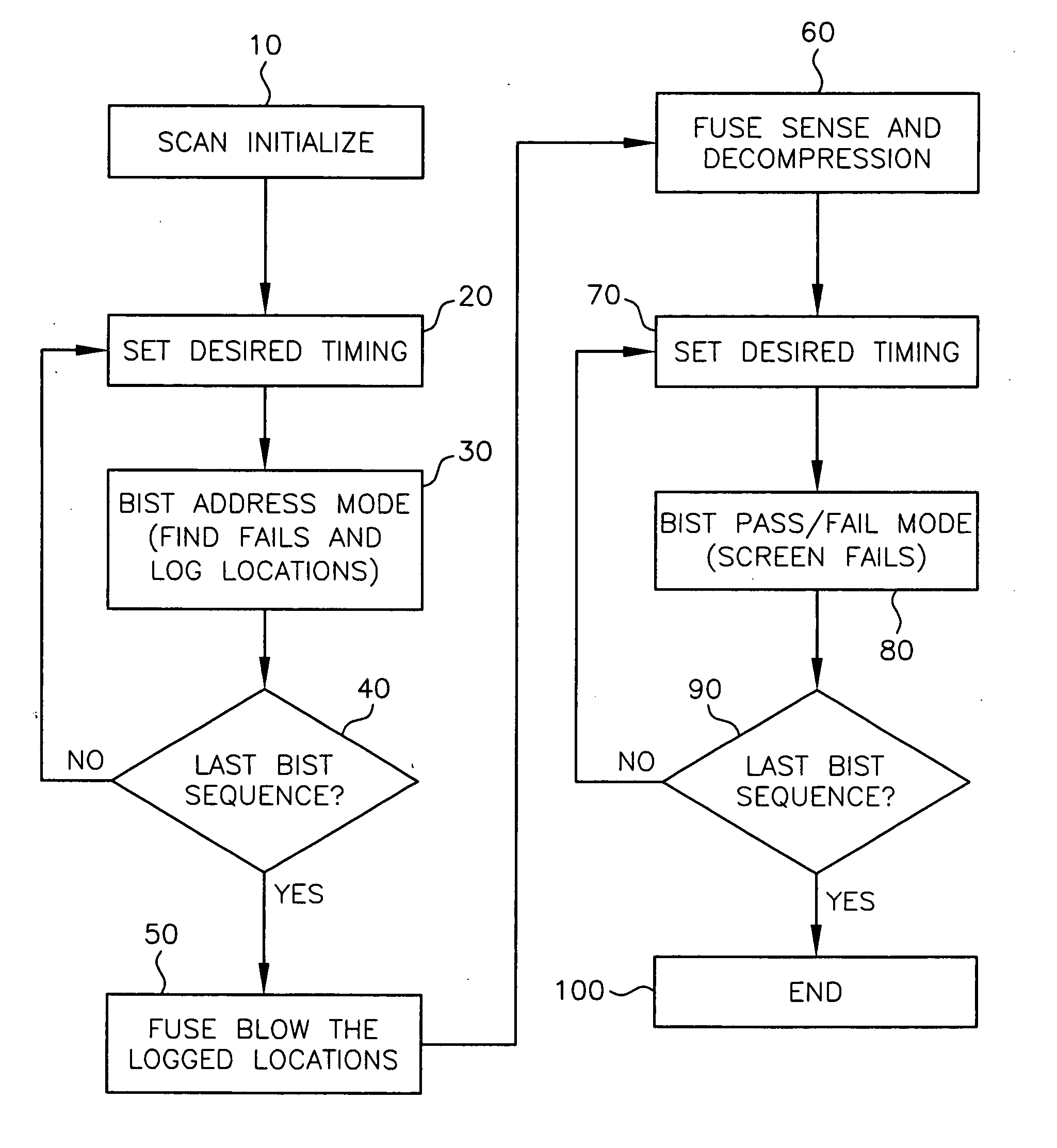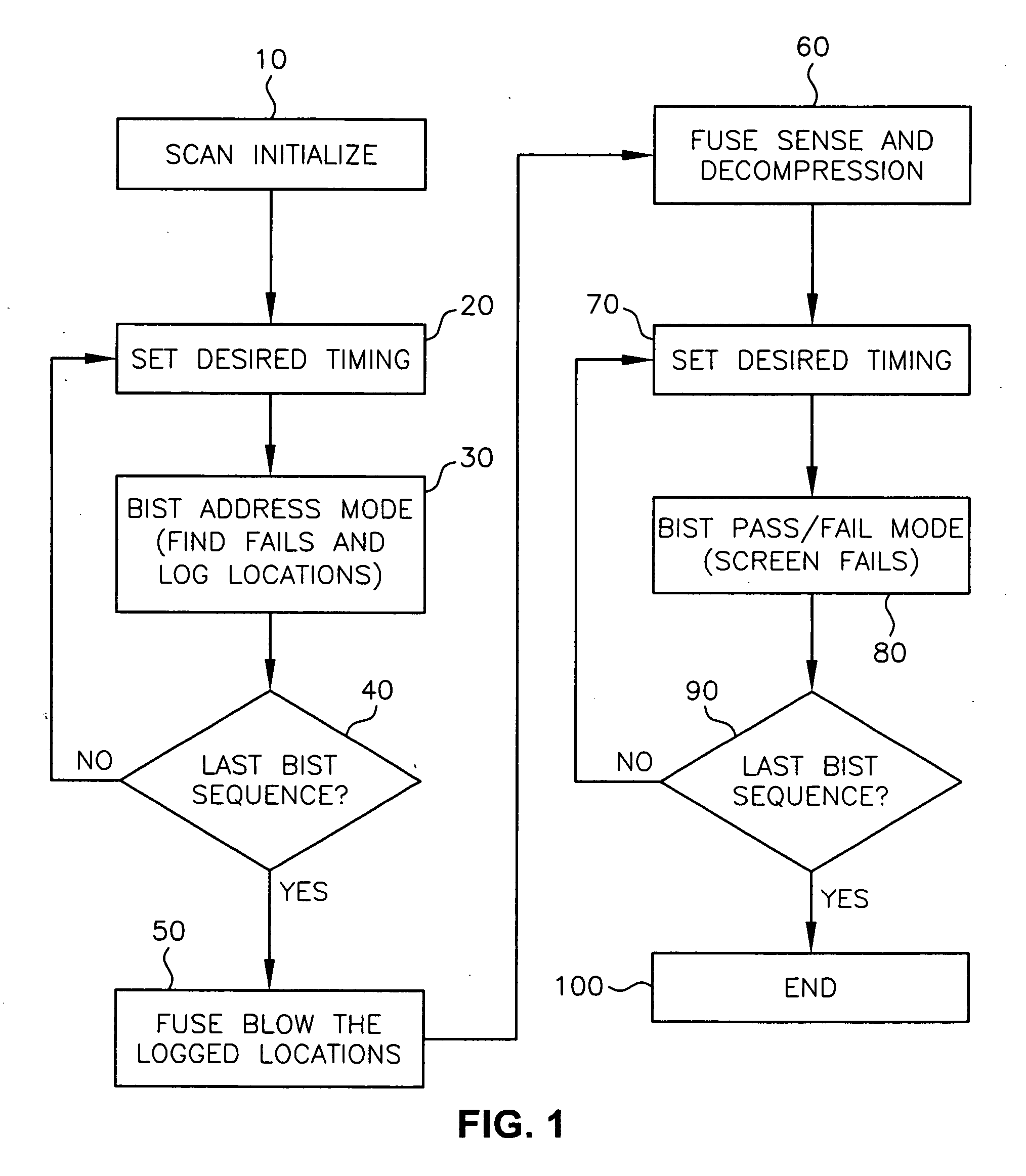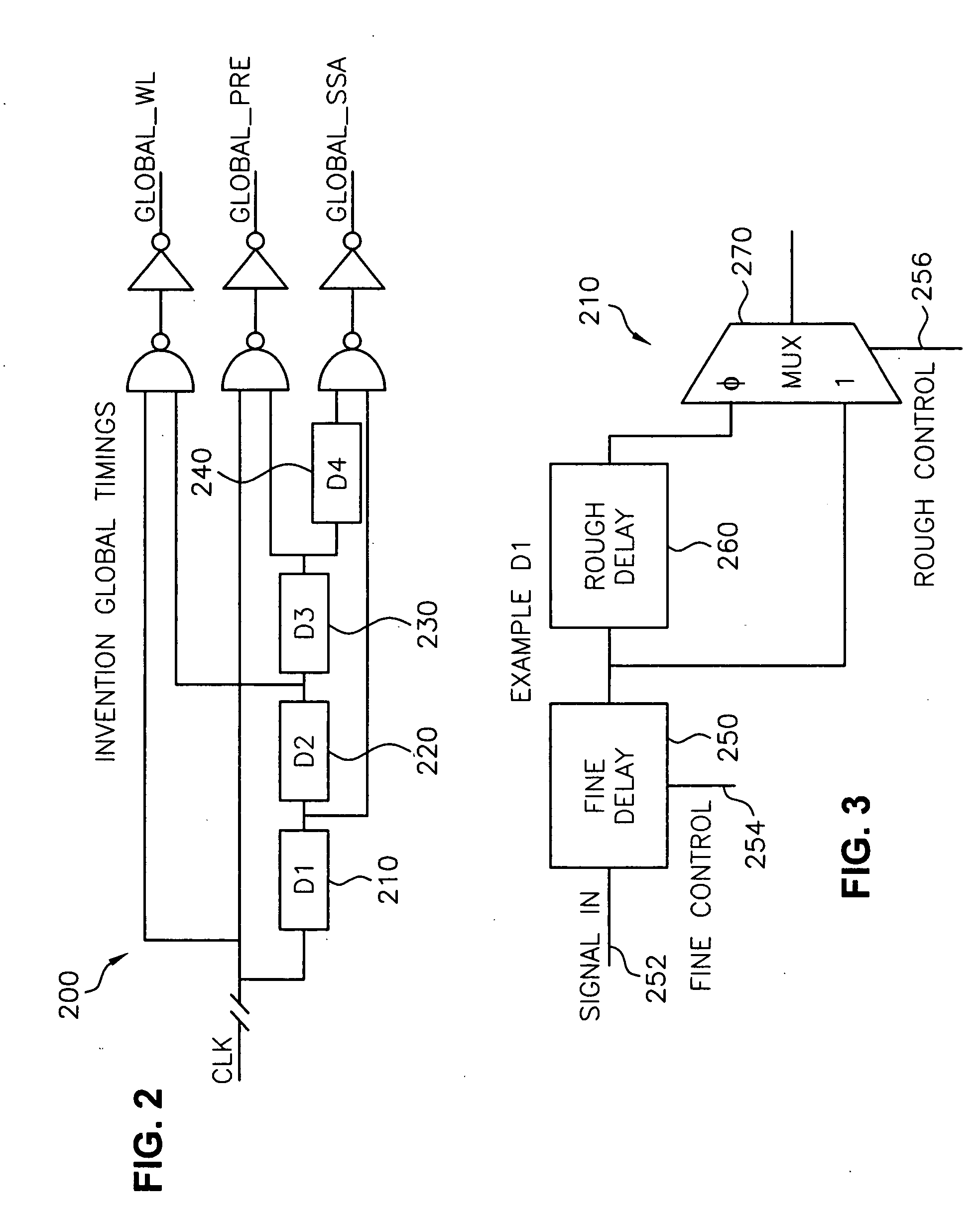Method and apparatus for test and repair of marginally functional SRAM cells
a technology of marginally functional sram cells and repair methods, applied in the field of repair of embedded memory, can solve the problems of loss of contents, failure in the field under normal operating conditions, and volatile sram cells
- Summary
- Abstract
- Description
- Claims
- Application Information
AI Technical Summary
Benefits of technology
Problems solved by technology
Method used
Image
Examples
Embodiment Construction
[0028] Most memory arrays, including embedded memory cells such as SRAM cells, have redundancy. That is, the cells have extra cells built into the memory array. If there are faulty cells, the faulty cells can be replaced with redundant cells. The inventors have devised a method of using the built-in self-test to identify weak memory cells, including embedded memory cells such as SRAMs, and to repair them before they are sent to a customer. The repairs are completed by using the built-in redundancy.
[0029] The invention tests the cells at a stress level that is a little harder than the cells would experience in the field under operational conditions run by the customer. Harder testing can be accomplished, for example, by running the cells with a tighter timing than the timing that would be used by the customer under operational conditions. In alternative embodiments, the memory cells may be tested at a higher frequency, or a higher voltage, or a higher temperature, or other harsher e...
PUM
 Login to View More
Login to View More Abstract
Description
Claims
Application Information
 Login to View More
Login to View More - R&D
- Intellectual Property
- Life Sciences
- Materials
- Tech Scout
- Unparalleled Data Quality
- Higher Quality Content
- 60% Fewer Hallucinations
Browse by: Latest US Patents, China's latest patents, Technical Efficacy Thesaurus, Application Domain, Technology Topic, Popular Technical Reports.
© 2025 PatSnap. All rights reserved.Legal|Privacy policy|Modern Slavery Act Transparency Statement|Sitemap|About US| Contact US: help@patsnap.com



